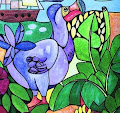and how it ended.
From History:
After the National Party gained power in South Africa in 1948, its all-white government immediately began enforcing existing policies of racial segregation under a system of legislation that it called apartheid. Under apartheid, nonwhite South Africans (a majority of the population) would be forced to live in separate areas from whites and use separate public facilities, and contact between the two groups would be limited. Despite strong and consistent opposition to apartheid within and outside of South Africa, its laws remained in effect for the better part of 50 years. In 1991, the government of President F.W. de Klerk began to repeal most of the legislation that provided the basis for apartheid.
BIRTH OF APARTHEID
Racial segregation and white supremacy had become central aspects of South African policy long before apartheid began. The controversial 1913 Land Act, passed three years after South Africa gained its independence, marked the beginning of territorial segregation by forcing black Africans to live in reserves and making it illegal for them to work as sharecroppers. Opponents of the Land Act formed the South African National Native Congress, which would become the African National Congress (ANC).
The Great Depression and World War II brought increasing economic woes to South Africa, and convinced the government to strengthen its policies of racial segregation. In 1948, the Afrikaner National Party won the general election under the slogan “apartheid” (literally “separateness”). Their goal was not only to separate South Africa’s white minority from its non-white majority, but also to separate non-whites from each other, and to divide black South Africans along tribal lines in order to decrease their political power.
APARTHEID BECOMES LAW
By 1950, the government had banned marriages between whites and people of other races, and prohibited sexual relations between black and white South Africans. The Population Registration Act of 1950 provided the basic framework for apartheid by classifying all South Africans by race, including Bantu (black Africans), Coloured (mixed race) and white. A fourth category, Asian (meaning Indian and Pakistani) was later added. In some cases, the legislation split families; parents could be classified as white, while their children were classified as colored.
A series of Land Acts set aside more than 80 percent of the country’s land for the white minority, and “pass laws” required non-whites to carry documents authorizing their presence in restricted areas. In order to limit contact between the races, the government established separate public facilities for whites and non-whites, limited the activity of nonwhite labor unions and denied non-white participation in national government.
APARTHEID AND SEPARATE DEVELOPMENT
Dr. Hendrik Verwoerd, who became prime minister in 1958, would refine apartheid policy further into a system he referred to as “separate development.” The Promotion of Bantu Self-Government Act of 1959 created 10 Bantu homelands known as Bantustans. Separating black South Africans from each other enabled the government to claim there was no black majority, and reduced the possibility that blacks would unify into one nationalist organization. Every black South African was designated as a citizen as one of the Bantustans, a system that supposedly gave them full political rights, but effectively removed them from the nation’s political body.
In one of the most devastating aspects of apartheid, the government forcibly removed black South Africans from rural areas designated as “white” to the homelands, and sold their land at low prices to white farmers. From 1961 to 1994, more than 3.5 million people were forcibly removed from their homes and deposited in the Bantustans, where they were plunged into poverty and hopelessness.
OPPOSITION TO APARTHEID
Resistance to apartheid within South Africa took many forms over the years, from non-violent demonstrations, protests and strikes to political action and eventually to armed resistance. Together with the South Indian National Congress, the ANC organized a mass meeting in 1952, during which attendees burned their pass books. A group calling itself the Congress of the People adopted a Freedom Charter in 1955 asserting that “South Africa belongs to all who live in it, black or white.” The government broke up the meeting and arrested 150 people, charging them with high treason.
In 1960, at the black township of Sharpesville, the police opened fire on a group of unarmed blacks associated with the Pan-African Congress (PAC), an offshoot of the ANC. The group had arrived at the police station without passes, inviting arrest as an act of resistance. At least 67 blacks were killed and more than 180 wounded. Sharpesville convinced many anti-apartheid leaders that they could not achieve their objectives by peaceful means, and both the PAC and ANC established military wings, neither of which ever posed a serious military threat to the state. By 1961, most resistance leaders had been captured and sentenced to long prison terms or executed. Nelson Mandela, a founder of Umkhonto we Sizwe (“Spear of the Nation”), the military wing of the ANC, was incarcerated from 1963 to 1990; his imprisonment would draw international attention and help garner support for the anti-apartheid cause...........

No comments:
Post a Comment
Note: Only a member of this blog may post a comment.